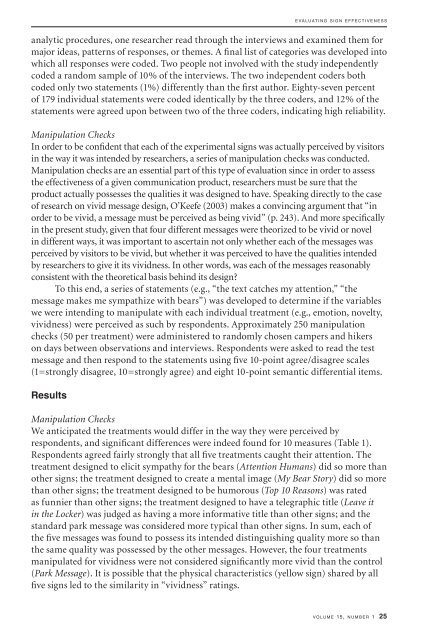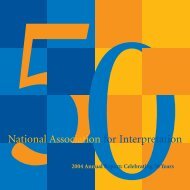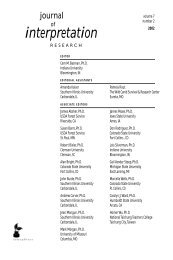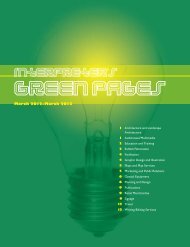interpretation
Volume 15, Number 1 - National Association for Interpretation
Volume 15, Number 1 - National Association for Interpretation
You also want an ePaper? Increase the reach of your titles
YUMPU automatically turns print PDFs into web optimized ePapers that Google loves.
e v a l u a t i n g s i g n e f f e c t i v e n e s s<br />
analytic procedures, one researcher read through the interviews and examined them for<br />
major ideas, patterns of responses, or themes. A final list of categories was developed into<br />
which all responses were coded. Two people not involved with the study independently<br />
coded a random sample of 10% of the interviews. The two independent coders both<br />
coded only two statements (1%) differently than the first author. Eighty-seven percent<br />
of 179 individual statements were coded identically by the three coders, and 12% of the<br />
statements were agreed upon between two of the three coders, indicating high reliability.<br />
Manipulation Checks<br />
In order to be confident that each of the experimental signs was actually perceived by visitors<br />
in the way it was intended by researchers, a series of manipulation checks was conducted.<br />
Manipulation checks are an essential part of this type of evaluation since in order to assess<br />
the effectiveness of a given communication product, researchers must be sure that the<br />
product actually possesses the qualities it was designed to have. Speaking directly to the case<br />
of research on vivid message design, O’Keefe (2003) makes a convincing argument that “in<br />
order to be vivid, a message must be perceived as being vivid” (p. 243). And more specifically<br />
in the present study, given that four different messages were theorized to be vivid or novel<br />
in different ways, it was important to ascertain not only whether each of the messages was<br />
perceived by visitors to be vivid, but whether it was perceived to have the qualities intended<br />
by researchers to give it its vividness. In other words, was each of the messages reasonably<br />
consistent with the theoretical basis behind its design?<br />
To this end, a series of statements (e.g., “the text catches my attention,” “the<br />
message makes me sympathize with bears”) was developed to determine if the variables<br />
we were intending to manipulate with each individual treatment (e.g., emotion, novelty,<br />
vividness) were perceived as such by respondents. Approximately 250 manipulation<br />
checks (50 per treatment) were administered to randomly chosen campers and hikers<br />
on days between observations and interviews. Respondents were asked to read the test<br />
message and then respond to the statements using five 10-point agree/disagree scales<br />
(1=strongly disagree, 10=strongly agree) and eight 10-point semantic differential items.<br />
Results<br />
Manipulation Checks<br />
We anticipated the treatments would differ in the way they were perceived by<br />
respondents, and significant differences were indeed found for 10 measures (Table 1).<br />
Respondents agreed fairly strongly that all five treatments caught their attention. The<br />
treatment designed to elicit sympathy for the bears (Attention Humans) did so more than<br />
other signs; the treatment designed to create a mental image (My Bear Story) did so more<br />
than other signs; the treatment designed to be humorous (Top 10 Reasons) was rated<br />
as funnier than other signs; the treatment designed to have a telegraphic title (Leave it<br />
in the Locker) was judged as having a more informative title than other signs; and the<br />
standard park message was considered more typical than other signs. In sum, each of<br />
the five messages was found to possess its intended distinguishing quality more so than<br />
the same quality was possessed by the other messages. However, the four treatments<br />
manipulated for vividness were not considered significantly more vivid than the control<br />
(Park Message). It is possible that the physical characteristics (yellow sign) shared by all<br />
five signs led to the similarity in “vividness” ratings.<br />
v o l u m e 15, n u m b e r 1 25












